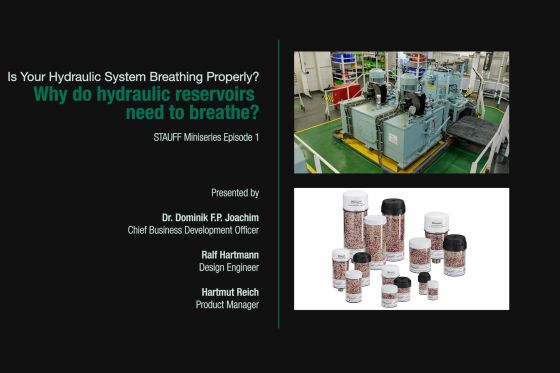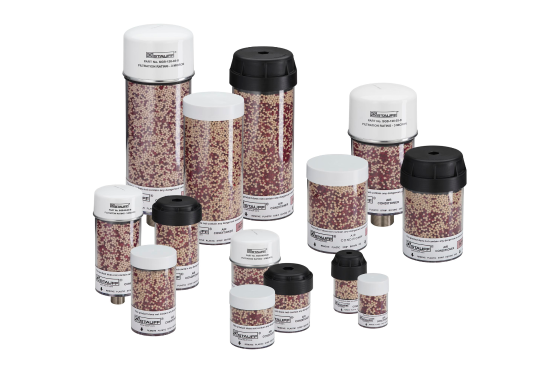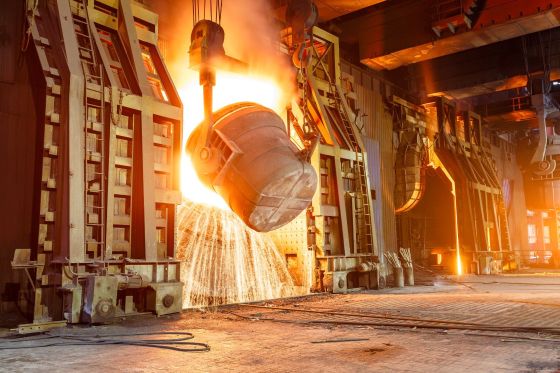Why do hydraulic reservoirs need to breathe?
Episode 1 of the STAUFF mini-series "Is your hydraulic system "breathing" properly?"
Air in a hydraulic system? While air is the power medium in pneumatic systems, it is only permitted in one place in oil hydraulics: in the hydraulic reservoir that holds the hydraulic fluid. Here, however, the air – which naturally contains a certain amount of moisture – has to be able to flow in and out unhindered. This is ideally achieved with a desiccant air breather. The hydraulic system “breathes”. In this video, our experts show you why:
Did you know: You can turn on subtitles by clicking the CC button at the bottom of the video.
Watch this and all other episodes of this STAUFF Minseries on Youtube instead.
Hydraulic systems “breathe” – ideally through a desiccant air breather!
Imagine you are having an open day at your factory. You are giving students who are interested in an apprenticeship a tour through the assembly workshops and want to explain to them how a hydraulic system works.
“Did you know that a hydraulic system breathes?”
“To understand the principle of a hydraulic system, let’s imagine a water gun. It is filled all the way. When we pull the trigger, the water is compressed until it is finally ejected from the opening. A hydraulic system works in a similar way. It contains a hydraulic fluid – usually oil, but in a closed system, so that it cannot escape uncontrolled at any point. Instead, the oil is compressed with a pump and moved to the hydraulic motor or cylinder under pressure, where it sets a functional unit in motion. At this moment, that pressure on the hydraulic oil decreases, and the oil expands. This process of compression and expansion becomes evident most clearly in the hydraulic reservoir. The level of the hydraulic fluid rises and falls with the rhythm of the pumping process. When the pressure drops, the oil displaces air. When pressure is built up again and compresses the oil, it draws in air. To ensure that no overpressure or underpressure occurs in the hydraulic reservoir and to prevent the reservoir from becoming deformed, air has to be able to flow in and out, just like when humans or animals breathe.”
Basically, this could be achieved with a simple opening in the hydraulic reservoir. This, however, could allow dirt particles such as dust, sand or pollen to enter the reservoir, or even insects or other foreign objects. These contaminate the hydraulic oil, which then has to be changed more frequently. Even small particles can have an abrasive effect and damage the sealing faces of valves and pumps, for example. Moisture can also lead to adverse reactions with the oil. Condensate can form in the reservoir and in the lines, causing corrosion. One thing leads to another, components are damaged, until finally the regular transmission of forces – which is indispensable for precision applications with stationary or mobile hydraulic systems – is affected and the machine fails.
To prevent such a chain reaction from the outset, STAUFF recommends fitting the opening of the hydraulic reservoir with a desiccant air breather. This allows air to flow in and out unhindered while keeping foreign substances and moisture out.
Do you already use desiccant breathers in hydraulic systems?
Then share your experiences and leave a comment below this post.

Newsletter Subscription
Receive automatic e-mail notifications about new posts on the STAUFF Blog








